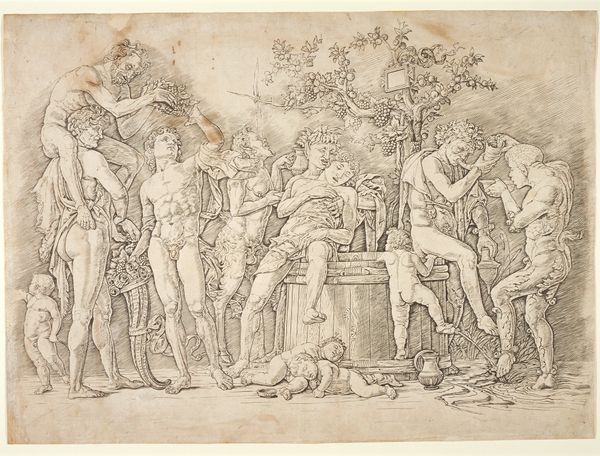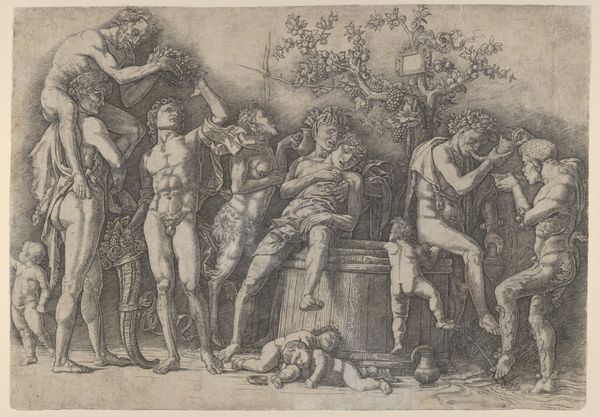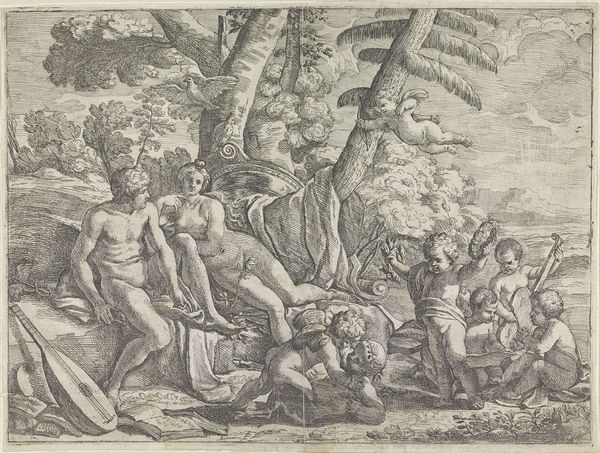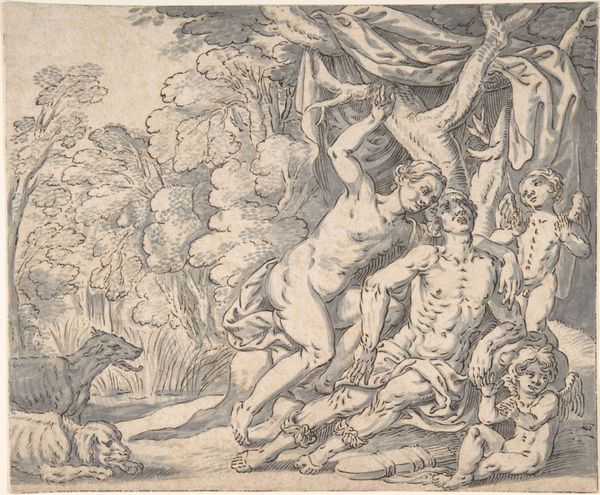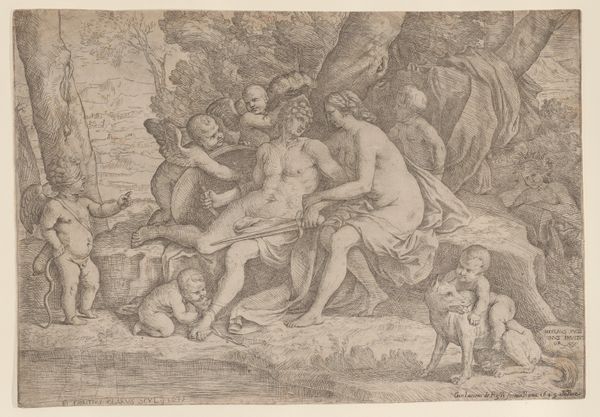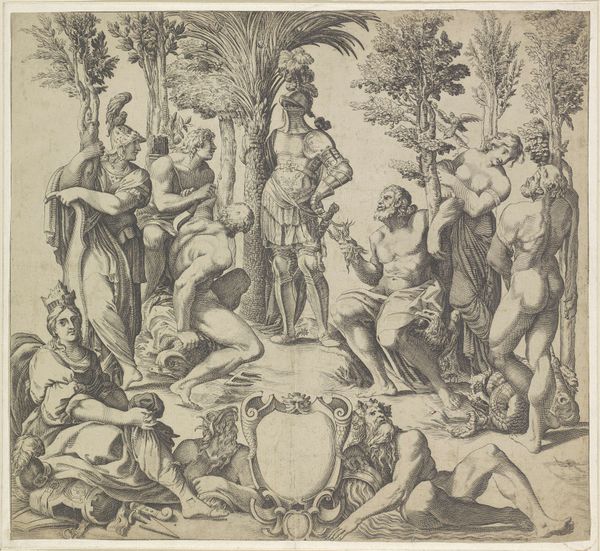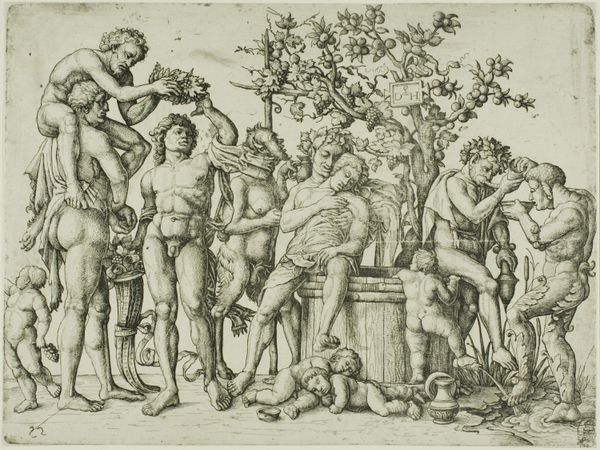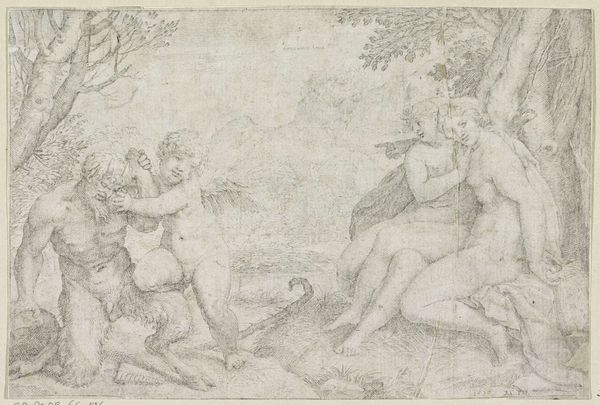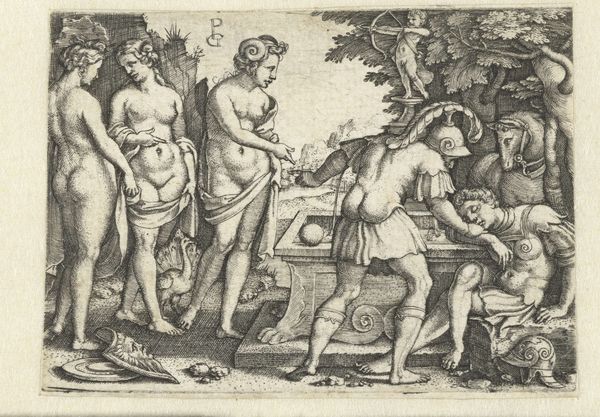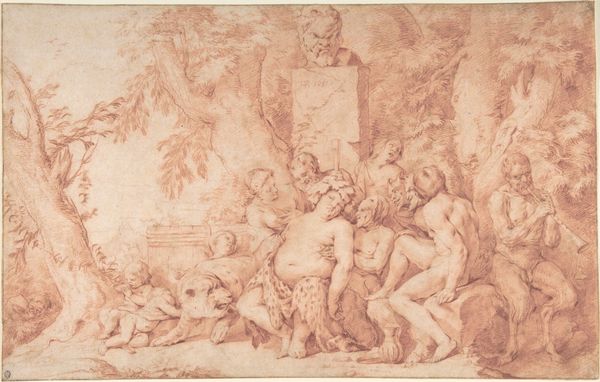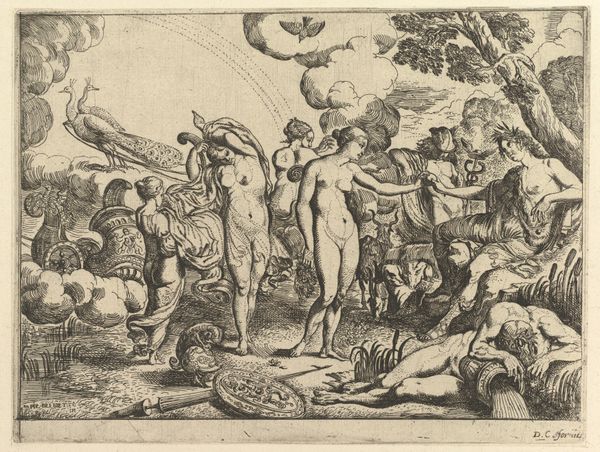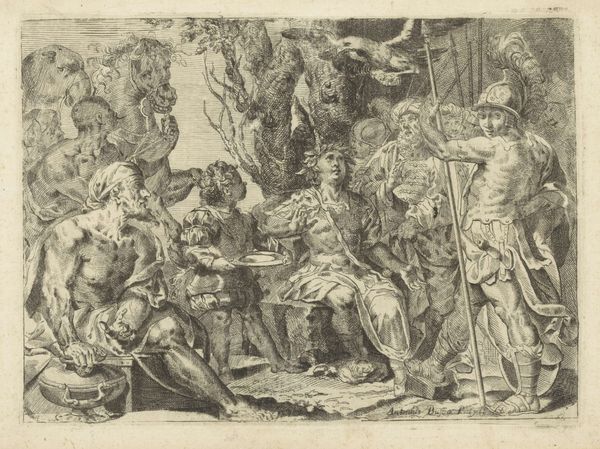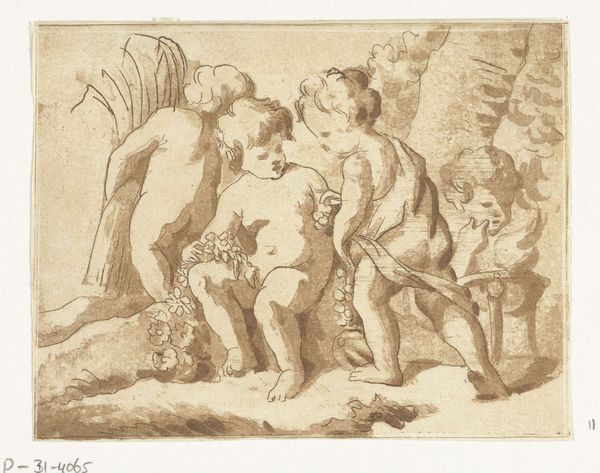
print, engraving
#
allegory
# print
#
landscape
#
figuration
#
genre-painting
#
history-painting
#
academic-art
#
italian-renaissance
#
nude
#
engraving
Dimensions: height 318 mm, width 438 mm
Copyright: Rijks Museum: Open Domain
Curator: My first impression of this is organized chaos. An etching depicting a drunken romp. There’s a kind of beauty, or allure, in it though, right? Like peeking through a doorway you’re not supposed to. Editor: That's a fair assessment. I mean, the piece titled "Bacchanaal met satyrs en bacchanten bij wijnpers", dating back to 1473-1477, etched by Andrea Mantegna, revels in excess, literally depicting Bacchus and his retinue during vintage. What calls my attention is how the artist utilized the engraving technique to emphasize textures—from the bulging muscles to soft grape leaves. Curator: Textures are everything here, yes. You feel the grittiness, don't you? I also adore how Mantegna isn't afraid to get into the muck. The bacchanal is both elevated—all the Greco-Roman ideals of beauty, balance, composition—and incredibly base, a mess of sweat, sinew, and spilled wine. Editor: Absolutely. Mantegna demonstrates how printing processes allowed images and concepts from antiquity to spread—circulating ideas about humanism, leisure, and the ideal body but at a low production cost. Those figures were made available to many, democratizing art. Curator: That feels incredibly apt here. A celebration available to the masses! Like vintage for everyone, from peasant to prince. Speaking of circulation, imagine owning an engraving like this, to pin it up, copy it or study it intimately... It speaks to how the human spirit hasn’t changed that much since the 15th century, surely? Editor: Possibly! In this artwork, though, I notice that the careful construction reveals Renaissance aspirations. We are meant to ponder classical narratives—to view history, pleasure, and even production with intellectual consideration. Not, I would add, solely unbridled hedonism. Curator: Ah, but aren’t the two inseparable? To learn from pleasure, to build intellect through the senses... Mantegna’s scene proposes a kind of cyclical creation and destruction, one leading to another. It is wine! Isn't life all a matter of perspective and experience? This scene celebrates just that. Editor: A potent and somewhat heady perspective. Thank you for highlighting it. Curator: Cheers to that, really, or cin cin. A perfect excuse to explore a deeper relationship between matter and soul in arts.
Comments
No comments
Be the first to comment and join the conversation on the ultimate creative platform.
